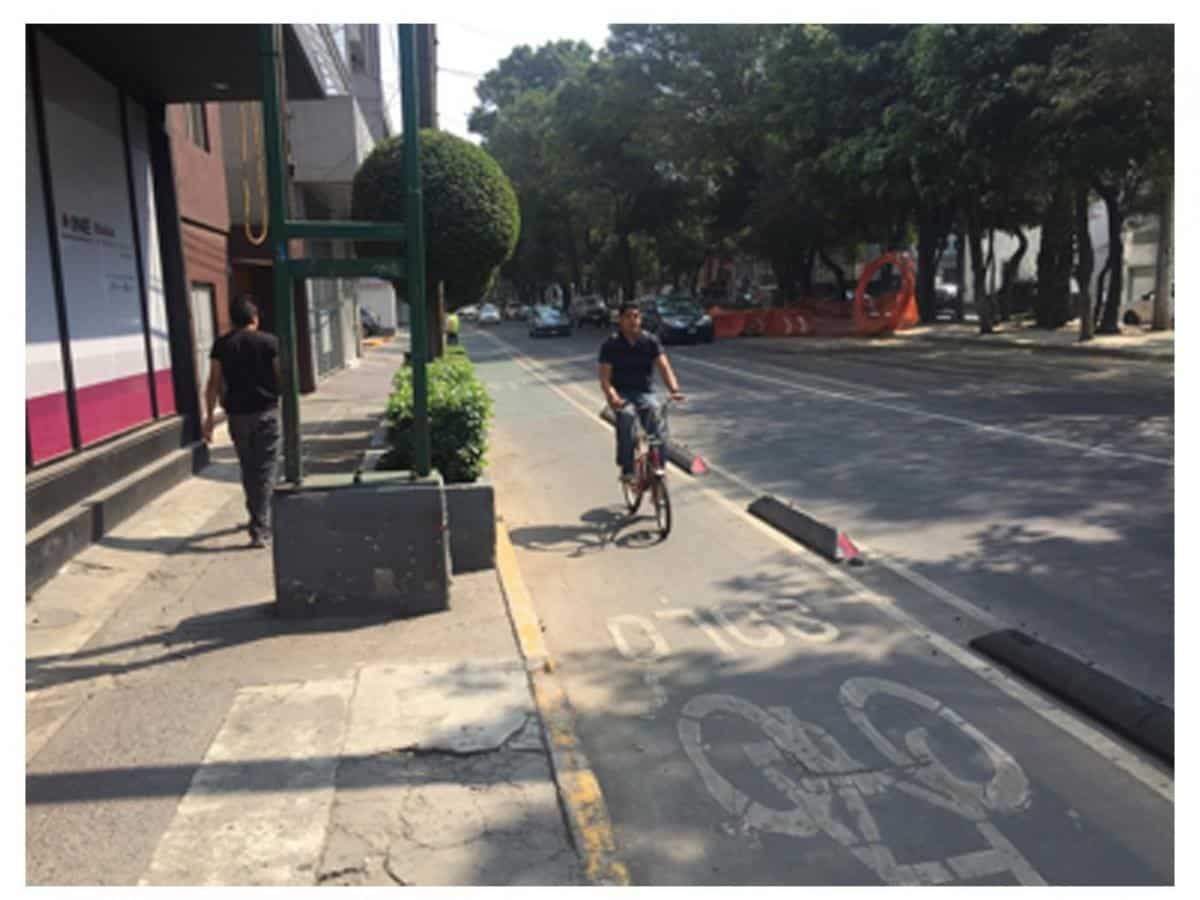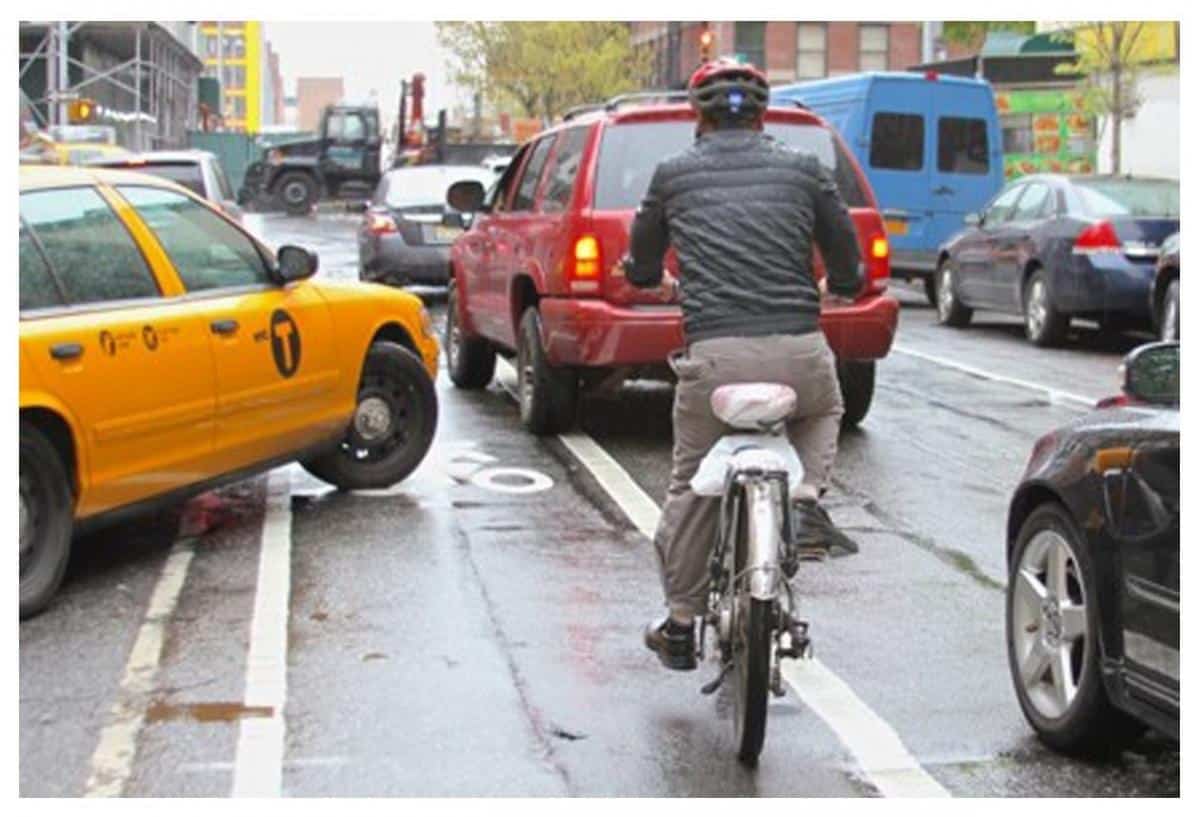Protected bike lanes
Protected bike lanes are intended to physically separate cyclists from motorized traffic and ensure their safety and fluid mobility. On busy roads, protected bike lanes help ensure cyclists feel safe and are not at great risk from distracted drivers.
A protected bike lane is provided by a buffer of some kind, which could include small “armadillo” humps, a linear curb, a raised bike path, plastic bollard posts within a painted area, or other means to provide physical protection.
Research on Canadian cities found that cycle tracks had a nearly 90 percent lower risk of cyclist injuries compared to major streets with no bicycle infrastructure. (Teschke et. al 2012)
Mexico City now has over 120 km of bike lanes, including protected lanes, and places like Shanghai also are installing protected bike lanes.
A new bike lane in New York has reduced rates of vehicle speeding from 74 percent to 20 percent. Crashes and injuries of all kinds dropped by 63 percent.
Compare the two photos below, for example. On the left, the bike lane is protected. On the right, the cyclist must navigate between vehicles encroaching on the bike lane.


References
Kay Teschke, M. Anne Harris, Conor C. O. Reynolds, Meghan Winters, Shelina Babul, Mary Chipman, Michael D. Cusimano, Jeff R. Brubacher, Garth Hunte, Steven M. Friedman, Melody Monro, Hui Shen, Lee Vernich, and Peter A. Cripton. Route Infrastructure and the Risk of Injuries to Bicyclists: A Case-Crossover Study. American Journal of Public Health: December 2012, Vol. 102, No. 12, pp. 2336-2343.